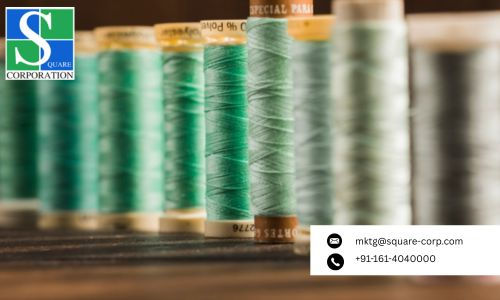What Makes a Fabric Organic from All Aspects: A Complete Overview
- squarecorpyarnfabr
- Jun 13
- 2 min read
Updated: Jul 22

In the 21st century, where people are becoming environmentally conscious and fashion-conscious, it is challenging to create a sustainable fashion statement with limited resources. In such a case, organic fabric works great. But do you know what organic really means when it comes to textiles? It is about growing cotton without the use of pesticides and chemical fertilizers. Even authentic organic fabric manufacturers in India strive to implement the best cultivation techniques to produce organic fabrics that meet the global requirements of the textile industry. Now, let's discuss what makes a fabric organic from all aspects.
How Organic Fabric Starts at the Frame
Organic fabric production begins with organic raw materials, typically natural fibers such as wool, hemp, cotton, and linen.
Organic cultivation primarily refers to the production of crops without the use of synthetic pesticides, chemical fertilizers, and genetically modified organisms (GMOs).
Farmers employ natural methods such as crop rotation, composting, and biological pest control.
Organic farming promotes soil fertility and biodiversity and requires less water.
Ethical Harvesting and Processing for Organic Farming
Growing organic cotton and hemp is not enough for organic agriculture. The next step is to ensure that the harvesting and fiber extraction process also adhere to organic principles.
In the wool cultivation process, animal welfare should be a vital aspect of the India textile manufacturing unit. No cruelty is allowed in wool production.
No chemicals are beneficial in organic cotton production
Natural retting systems are helpful for hemp and flax production. It is vital to avoid harsh chemicals.
What is the Significance of Chemical-Free Fabric Production?
The processing stage is a vital part of organic fabric production. These steps include spinning, weaving, dyeing, and finishing.
Organic fabrics are produced with nontoxic, biodegradable elements
Chlorine bleach and heavy metals are not used in the production of organic fabrics.
Use of low-impact natural dyes and enzyme-based softeners for fabric production
Wastewater is treated to reduce environmental harm.
Conclusion
Apart from the factors mentioned above, the organic fabric must have global certification to ensure the ingenuity of the fabric quality. Processing organic fabric is not a single task. It is an accumulated form of several tasks. From chemical-free farming to the ethical processing of organic certification, the production of organic fabrics must be a vital task for the textile industry.




Comments